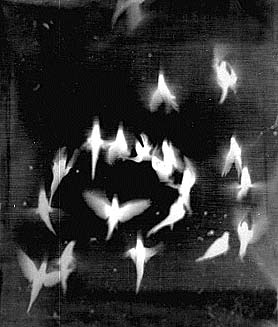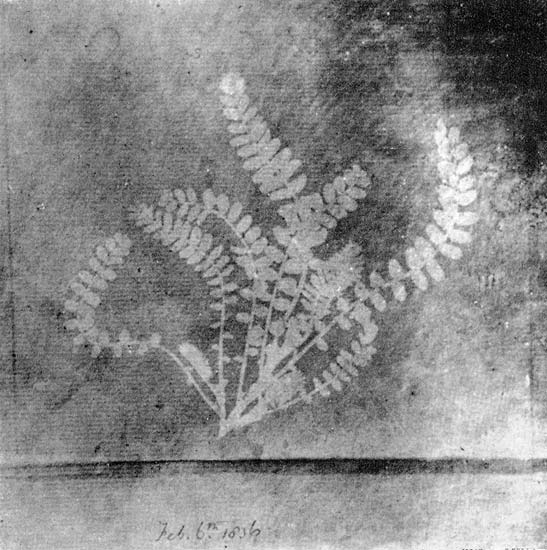There are two ways of looking at the world. One is as though nothing is a miracle. The second is as though everything is a miracle -- Einstein
Friday, December 4, 2009
Sunday, November 15, 2009
Sir, - I beg to bring to your notice the serious harm likely to come from the increasing popularity of photography. Since Mr. Talbot and M. Daguerre perfected their processes for fixing a living image on paper a few years ago, there has been an alarming increase in the popularity of this unnatural pastime. The stage has now been reached when permanent damage is likely to be inflicted not only on painting, engraving, and the arts in general, but upon industry, manners, and the home itself.
-- Unnamed Commentator, 1851
Nathan Lewis, Untitled, 2009
Saturday, November 7, 2009


Wednesday, November 4, 2009
1) Studium: "meanings that are nameable," "given cultural meanings that we understand at once"
2) Punctum: "a personal memory based not on the public archive but a private repertoire," "stings the viewer...some detail (some accident in the photograph)"; "occurs when there is a match between a signifier in the scene (in the photograph), and a scene in the memory"
-- Roland Barthes
Nathan Lewis, Untitled (Deer), 2009
Sunday, October 25, 2009

Nathan Lewis, Untitled, 2009
[Photography can]…allude to other levels of reality in which a subject might be depicted as existing in two or more places simultaneously…the medium is capable not only of faithfully recording images fixed in time and place but also of producing those that transcend such limitations and exist in a mysterious limbo.
Saturday, October 17, 2009
Brownie Holiday
Thursday, October 8, 2009
Wednesday, October 7, 2009

Tuesday, September 8, 2009
Sunday, August 23, 2009

This county's a hard county. They won't help bury you here. If you die, you're dead that's all.
Quotes by and Photographs of Nettie Featherston
Images by Dorothea Lange
Sunday, August 16, 2009
Kodak Ghost Poems

Monday, August 10, 2009
Sunday, August 9, 2009

Saturday, August 8, 2009
Mesmeric Revelations

Adam Fuss, My Ghost, 1999
A Doctor speaking to a Patient under hypnosis (mesmerized), 1844
Dr. P: Are you asleep ?
Vankirk (patient): Yes - No I would rather sleep more soundly.
P: Do you sleep now ?
V: I must die.
P: Does the idea of death afflict you ?
V: No - no !
P: Are you pleased with the prospect ?
V: If I were awake I should like to die, but now it is no matter. The mesmeric condition is so near death as to content me.
P: I wish you would explain yourself, Mr. Vankirk.
V: You must begin at the beginning.
P: The beginning ! but where is the beginning ?
V: You know that the beginning is GOD.
P: What then is God ?
V: I cannot tell.
P: Is not God spirit ?
V: While I was awake I knew what you meant by "spirit," but now it seems only a word - such for instance as truth, beauty - a quality, I mean.
P: Is not God immaterial ?
V: There is no immateriality - it is a mere word. That which is not matter, is not at all - unless qualities are things.
P: Is God, then, material ?
V: No.
...
P: I do not comprehend. You say that man will never put off the body ?
V: I say that he will never be bodiless.
P: Explain.
V: There are two bodies - the rudimental and the complete ; corresponding with the two conditions of the worm and the butterfly. What we call "death," is but the painful metamorphosis. Our present incarnation is progressive, preparatory, temporary. Our future is perfected, ultimate, immortal. The ultimate life is the full design.
P: But of the worm's metamorphosis we are palpably cognizant.
V: We , certainly - but not the worm
...
As the sleep-waker pronounced these latter words, in a feeble tone, I observed on his countenance a singular expression, which somewhat alarmed me, and induced me to awake him at once. No sooner had I done this than, with a bright smile irradiating all his features, he fell back upon his pillow and expired. I noticed that in less than a minute afterward his corpse had all the stern rigidity of stone. His brow was of the coldness of ice. Thus, ordinarily, should it have appeared, only after long pressure from Azrael's hand. Had the sleep-waker, indeed, during the latter portion of his discourse, been addressing me from out the regions of the shadows?

































